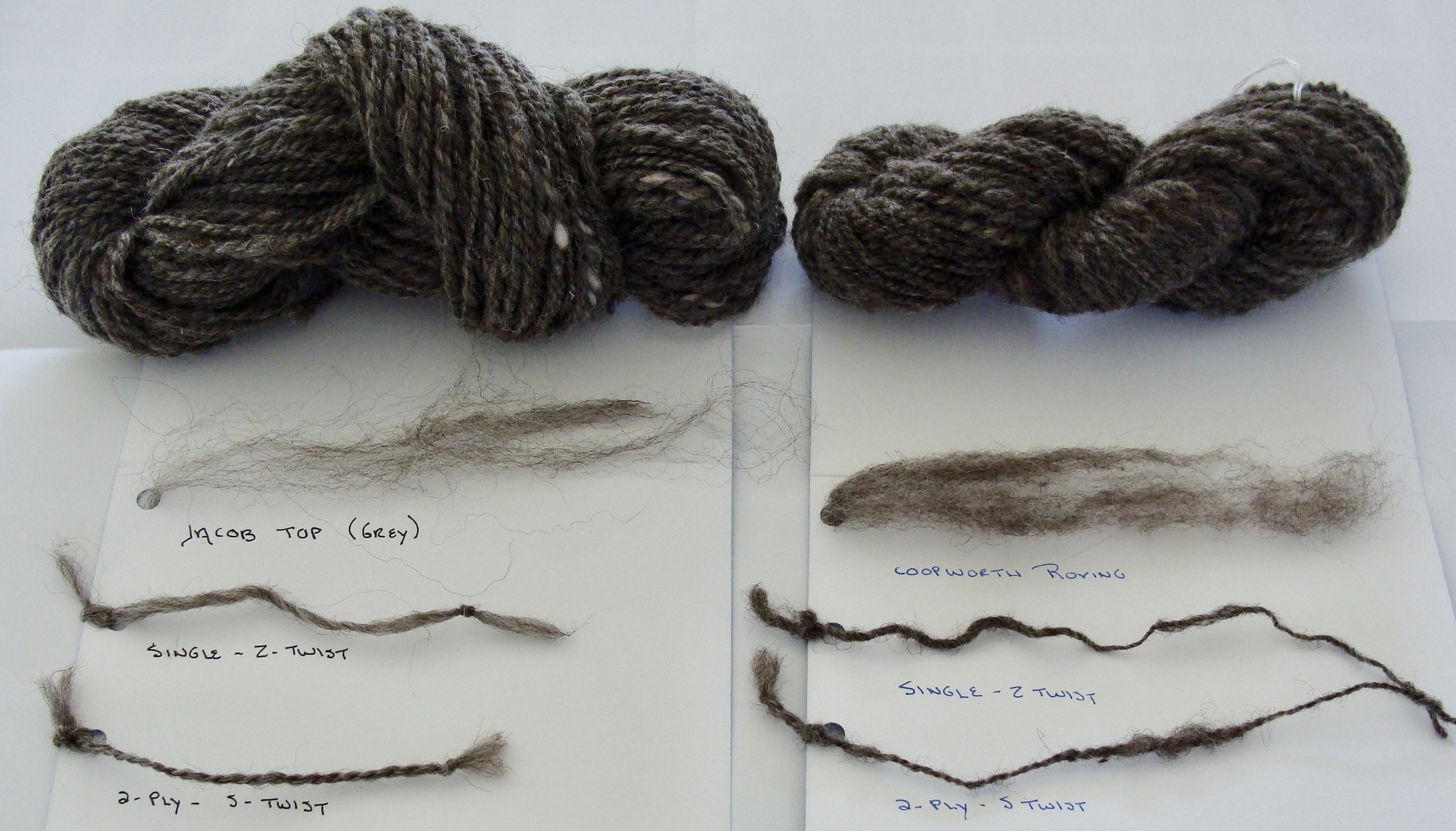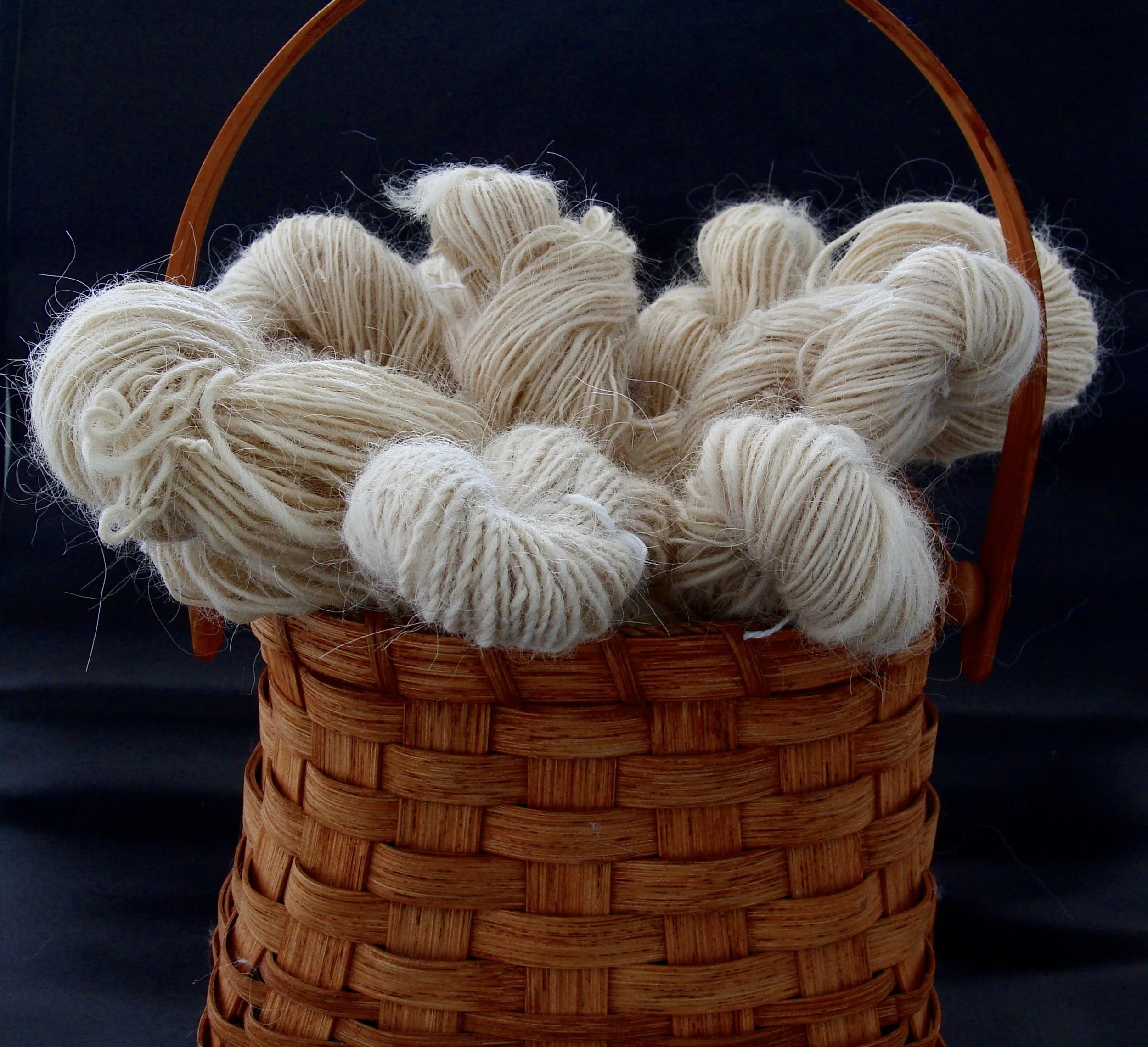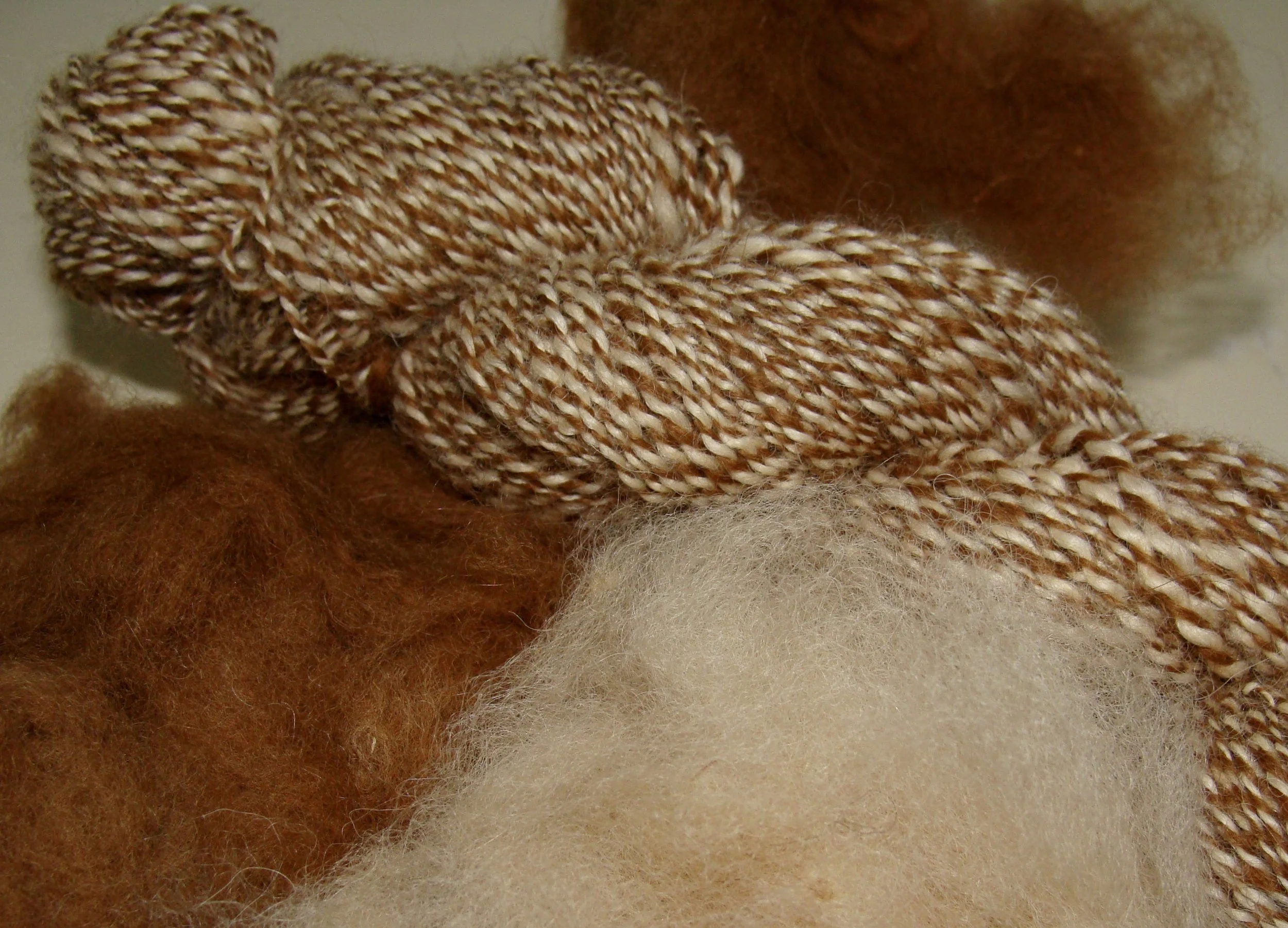Let's Spin . . . Jacob
This is the second post in the Let's Spin. . . series. You can find the first post on spinning Coopworth here.
Today's spin study is Jacob wool. Jacob sheep are relatively small sheep that were historically kept as ornamental animals by the gentry of England. Jacob wool is interesting because there are multiple different colors within a single fleece. Jacobs' color patterns typically are white and black, but can also be white and gray or soft brownish-gray (called lilac).
In the book of Genesis, Jacob, a lowly shepherd, asked his wealthy father-in-law, Laban, if he could keep all the spotted sheep as payment for his work. His father-in-law said yes, and in a dream, God told Jacob to use only spotted rams for breeding. He soon had all spotted sheep. _________________________The Fleece & Fiber Sourcebook (Robson)
Another interesting little fact about the Jacob sheep is that they are double horned (sometimes triple horned) with a goatish set extending up and a sheepish set that curls.
Jacob fleeces not only are multicolored, but they "have one of the widest ranges of acceptable fiber qualities of any kind of sheep" according to Deb Robson (The Fleece and Fiber Sourcebook). The wool generally has some luster but varies in crimp, fineness, and staple length** (3 to 7 inches); this variation can occur from sheep to sheep or even within the same fleece. Jacob wool has been described as crisp feeling with a springy quality.
**see this post for a discussion of these fiber terms**
Commercially prepared Jacob wool is usually more of a homogenous brownish grey, resulting from batch blending of white, browns, grays, and sometimes blacks. I look forward to one day purchasing and self-processing a multicolor raw fleece and sorting it by individual colors prior to spinning.
The Jacob wool I handspun was grey top from Louet. I also wanted to try to spin a tweed style yarn so you can see a pile from my stash bag of remnant fibers. More on spinning tweed yarn at the bottom of this post.
Jacob wool handspun single on bobbin
I spun on my Louet S-17 wheel on a 7.5:1 ratio and then plied from a center pull ball, again using a 7.5:1 ratio This produced a nicely balanced yarn. Jacob wool can have a bit of kemp. The top I spun had very little white kemp which was easily picked while spinning or pulled out from the finished yarn.
Kemp - hair (not wool) fibers that are heavy and coarse.
Jacob 2 ply handspun yarn after finishing
To finish the yarn, I soaked it in hot water with a little wool soap for about 10 minutes, then rinsed with warm water, and hung to dry. My finished yarn is 52 grams/74 yards, roughly 14 wraps per inch (WPI); probably a sport weight overall.
Jacob wool has been described as bouncy and springy. I would definitely agree; although I spun this with a worsted (short draw technique), I think it would be even springier, if spun woolen (long draw technique). Some describe Jacob as soft, almost buttery. My yarn is not soft but also not scratchy; I probably wouldn't want it right next to sensitive skin areas like a scarf would be. Again, that was this Jacob top; remember there is great diversity among Jacob fleeces!
Comparison of Jacob (left) and Coopworth (right)
For comparison, I placed my spinning cards for the Jacob and Coopworth yarns side by side. In looking at the unspun fiber you can see this Jacob had less crimp, no neps, and was finer than the Coopworth. The resultant Jacob yarn was smoother with more twist definition than the Coopworth.
Resources/Recommendations:
Spin-Off Magazine - Seeking Spots: One Fleece, Many Colors (McKean). F15: 85–88
Spin-Off Magazine - A Pair of Jacob Hats, K (Hauer). W15: 88–94
The Fleece & Fiber Sourcebook by Deborah Robson & Carol Ekarius
Website - Spotted Fever http://www.spotted-fever.com/catalog.html - you've got to check out their hats!!!
As promised, I'll end this post with a mini tutorial on spinning tweed-like yarn. For the main fiber, you need a medium to long staple length, in this case the gray Jacob top. For the textured or tweed fiber(s), select one that is very short, such as Yak, Cashmere, silk noil, or you could use the waste from your carding and spinning as I have done! I chose pinks, blues, purples, white, and other grays from my remnant fiber stash and pulled them into small pieces.
You will need more of your base fiber than of the short texture fiber. Your fiber proportions depend on the amount of tweed you want in your yarn. I used about a 1:10 ratio of short fibers to Jacob fiber. In the future, I would use a greater amount of short fibers to achieve a little more tweed in the yarn.
I ran the fibers through my drum carder by putting a thin layer of Jacob on first. Then I added some of the short fibers and continued alternating between the Jacob and the short fibers; finishing with a thin layer of Jacob. I removed the batt, split it into four lengths, and recarded it to blend and spread the short fibers through the batt.
To spin, I pulled strips off the batt. As I drafted, there were little clumps of texture fiber coming through caught into the longer Jacob fibers. I tried not to smooth these down as I spun, trapping them into the twist.
I hope you enjoyed this post, and even better, I hope you are inspired to try something new!














